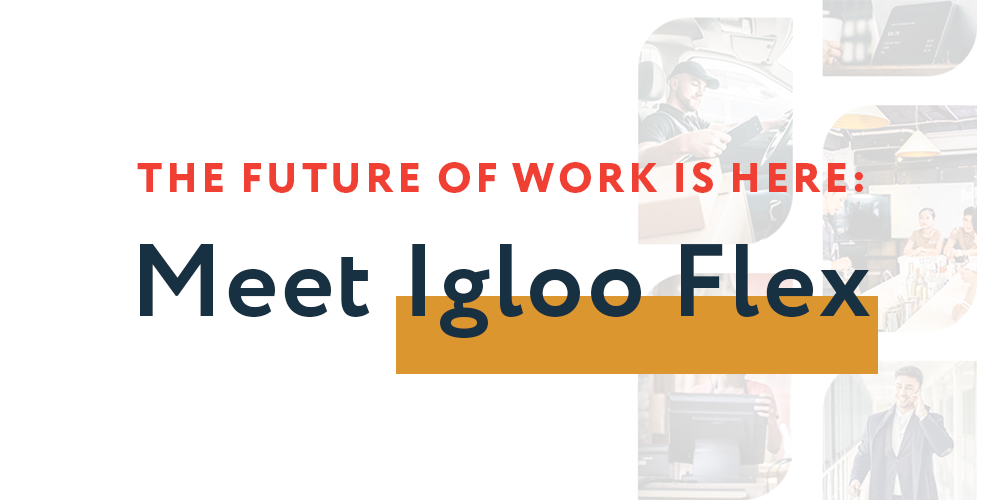
You’ve probably heard the term “quiet quitting” with its recent surge in popularity. In fact, Gallup has found that quiet quitters likely make up more than half of the entire workforce in the U.S. right now. Unfortunately, a lot of information out there doesn’t cut to the root cause and actual heart of this issue.
Beyond the sensationalized headlines, should you be concerned about it? Is it caused by ungrateful employees deciding to do the bare minimum and slack off? Or have many simply started to set boundaries after feeling unappreciated? Whatever the true nature of this shift, one thing is clear — the onus is on employers, not employees, to resolve it.
What is quiet quitting?
Quiet quitting is defined as completing your core tasks and responsibilities, but not going above and beyond to take on additional work or going out of your way to provide extra value to the company. An alternative name that some have been using, “acting your wage,” summarizes it — doing precisely what your job requires, nothing more, nothing less.
Traditionally, going above and beyond in a healthy organization came with benefits like increased career success, social capital, etc. to outweigh the extra time and stress spent. However, this trend of quiet quitting indicates that this scale has become unbalanced, and employers are asking for more effort from their employees without investing enough in them in return. When it comes down to it, quiet quitting isn’t a people problem, it’s a failure of HR and management methods to maintain the employee experience of the company.
Why is it so popular all of the sudden?
So why now? There are a number of reasons that contribute to this trend and its timing, although we don’t have a perfectly clear picture. What we do know is that a large factor is “The Great Resignation” and its impact on how employees view themselves. Many have been prompted to take a more critical look at whether they’re happy in a job, how they’re treated, and if they see long-term success staying with their current company. Often, the answer to these questions isn’t positive.
This assessment of work environments and career trajectory has coincided with low firing rates (as companies struggle to replace valuable workers that have quit), and higher levels of stress through the pandemic. All of these reasons have contributed to a workforce that is now more willing than ever to set work-life boundaries for mental health and self-betterment.
What causes quiet quitting?
As we just mentioned, there are a lot of variables that have gone into boosting this trend from a macro perspective, but what about on an individual level? What causes a person to decide to step back and quiet quit?
Burnout is a huge reason for this. Being overworked and under-engaged by managers or a company’s culture can make anyone feel like they’re spending too much time and effort without enough in return. Gallup research shows a significant drop in workplace engagement since 2021, which has led to the lowest ratio of engaged to actively disengaged employees in the last ten years.
That frustration can come from other areas of work as well, such as seeing coworkers skate by doing the bare minimum, so why shouldn’t you? Perhaps if there was more recognition or benefits to going above and beyond it would incentivize people to become more engaged again. But employee engagement and experience aren’t something you fix overnight, it’s something that requires a significant, company-wide shift.
How to fix or avoid it
Before we discuss solutions and strategies to combat quiet quitting, it’s important to actually determine if it’s hurting the team or company. Has revenue gone down because of a decrease in productivity? Or, is the work that needs to be done still getting done?
If you identify that it is having a negative effect, it’s time to focus on actionable solutions that will help your employees feel valued and motivated to work:
- Stop job creep – the gradual expansion of a role’s core responsibilities over time fits exactly with what’s causing quiet quitting by asking for more without giving more. The pandemic has led a lot of positions at companies to be forced to wear multiple hats, putting out fires all over the place. Recalibrating responsibilities will help stop job creep and make it clear who takes ownership of what.
- Ask and listen – feedback will be one of your most important tools in the specific avenues taken to improve your work environment. This goes beyond just sending out a survey with generic questions, but meeting one-on-one with workers to connect with them. Not only asking for feedback, but actually listening, organizing the data, and following through on what employees bring up or have concerns about.
- Focus less on hustling and more on culture – while some people relish hustle culture and being encouraged to work 12 hours a day, many don’t. By building a positive and inclusive work culture, you can engage workers behind the company’s mission and vision, and make them want to work hard and support their team.
- Go back to the drawing board on the employee experience – understanding what an employee’s journey through the company looks like, as well as optimizing and actively improving pain points is a crucial part of culture and engagement. This can be accomplished through employee journey maps, which not only help employees see how their careers can develop and progress within the company, but also help management understand what they can be improving upon as well.
- Enforce appropriate work-life boundaries to avoid burnout – if you don’t, workers eventually will, and on their own terms. Not only will this prevent overworking, but it will build a stronger company culture and likely stronger relationships between managers and their employees.
- Invest in developing your people – research from McKinsey in 2022 showed that the leading cause of quitting was a lack of career development and advancement. This absence of career mobility means a huge missed opportunity for companies to retain their top talent, and instead are losing them to competitors (or even other industries). Make sure to invest time and resources into talking to people about their options to further their careers with the company, and actually help them achieve it.
When it comes down to it, managers and organizations need to engage their workforce much more than they are currently. While quiet quitting may be a trendy buzzword to substitute for disengagement, a huge number of companies have been avoiding investing in their employee experience because they don’t see the value. Maybe the scale of this trend will change that mindset.
Improve your employee experience & engagement with Igloo
With everything we’ve talked about, it might seem overwhelming to figure out where to start — especially when many workforces are working at least part-time from home. At Igloo, we’ve spent the last decade creating innovative solutions to connect people in a digital work environment, boosting productivity, collaboration, and yes, engagement, along the way. Our platform helps people work from wherever they need to, whenever they need it, and have all the information they need at their fingertips. If you’re looking for a comprehensive package that can give your employee engagement initiatives a foundation and home, look no further. Check out our features and pricing, or get started with a demo today!




